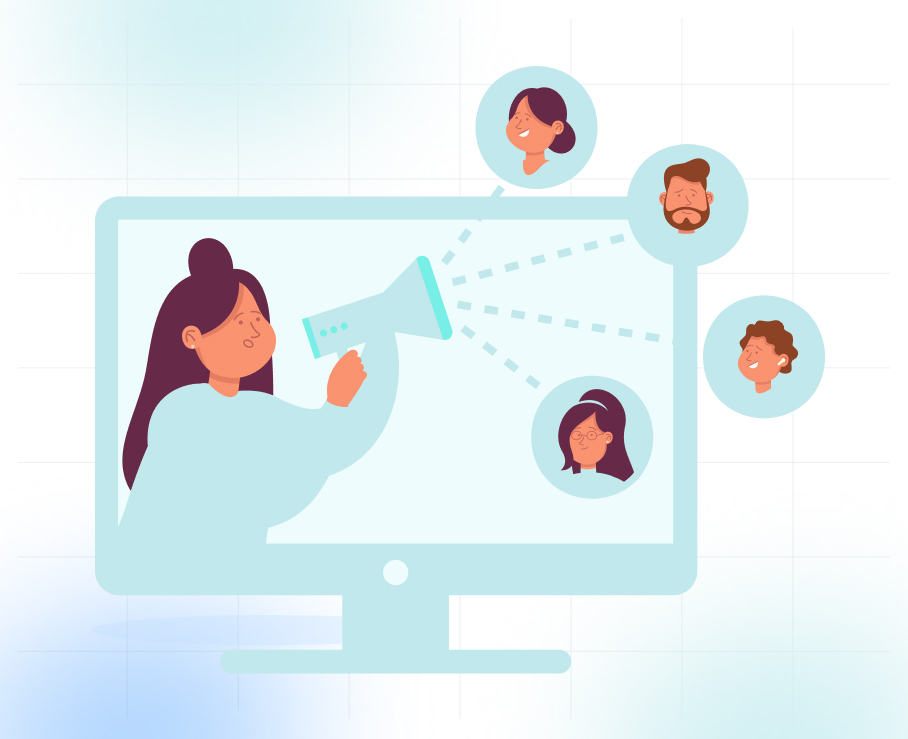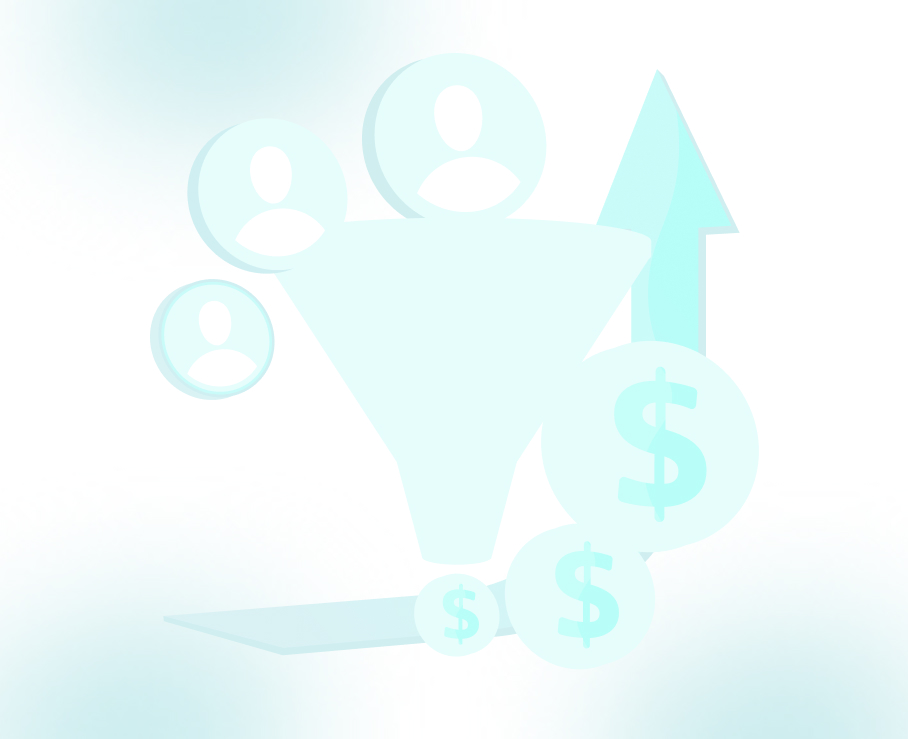
Targeted Lead Generation: Boost MRR with High-Intent Leads in 2025
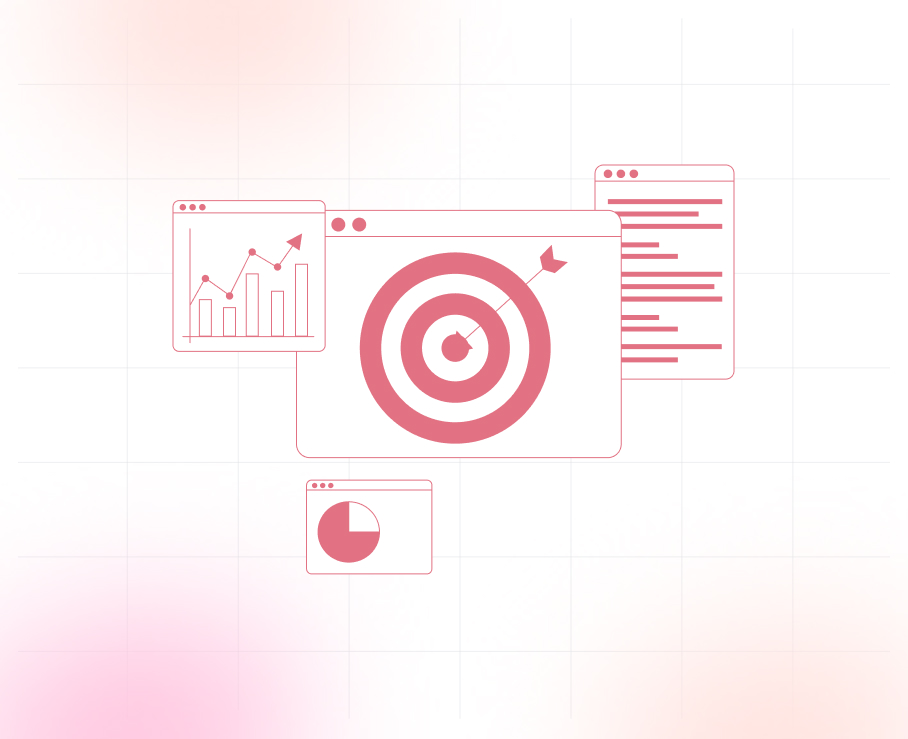
91% of marketers say lead generation is their #1 goal, yet many B2B teams still struggle to meet pipeline targets. Why? Because not all leads are created equal.
Most companies chase volume, but without precise targeting, that traffic rarely turns into real sales or Monthly Recurring Revenue (MRR).
This guide breaks down actionable strategies to help B2B teams cut waste, improve conversions, and turn targeted outreach into a scalable growth engine.
What is Targeted Lead Generation?
Targeted lead generation focuses on identifying and engaging leads that fit your Ideal Customer Profile (ICP), prospects with real buying intent, budget, and need.
Instead of casting a wide net, this approach focuses on quality over quantity. It prioritizes precision, aiming to connect with leads who are more likely to convert, shortening the sales cycle and boosting return on outreach efforts.
By focusing on the right fit, targeted lead generation not only boosts conversion rates, it also supports more sustainable revenue through higher-quality deals and consistent Monthly Recurring Revenue (MRR).
To fully understand the impact of targeted lead generation, let's explore how it improves conversion rates and optimizes resource allocation for businesses.
Why Targeted Lead Generation Matters?
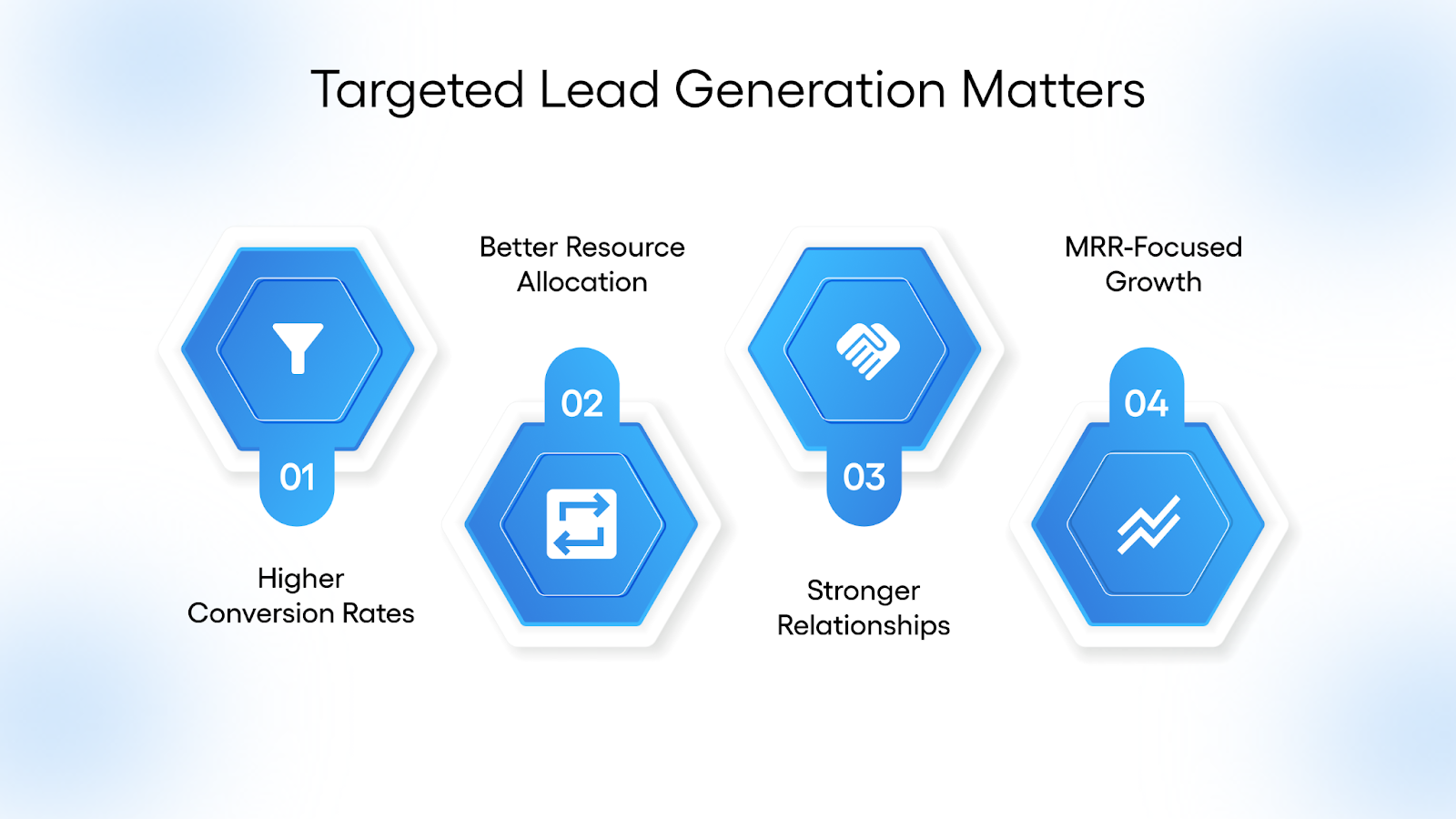
Targeted campaigns maximize efficiency by reducing waste and improving conversions. Here's how:
- Higher Conversion Rates: Aligned leads convert faster, improving pipeline velocity.
- Better Resource Allocation: Spend less time on unqualified leads.
- Stronger Relationships: Personalized messaging boosts engagement.
- MRR-Focused Growth: Prioritize recurring business over short-term
Now, let's see what actionable steps you can take to attract and convert high-quality leads effectively.
“It’s not about reaching more people—it’s about reaching the right people with the right message at the right time. That’s where real pipeline growth happens.”
— Matt Heinz, B2B Marketing Strategist, Heinz Marketing
4 Essential Steps to Generate Targeted Leads
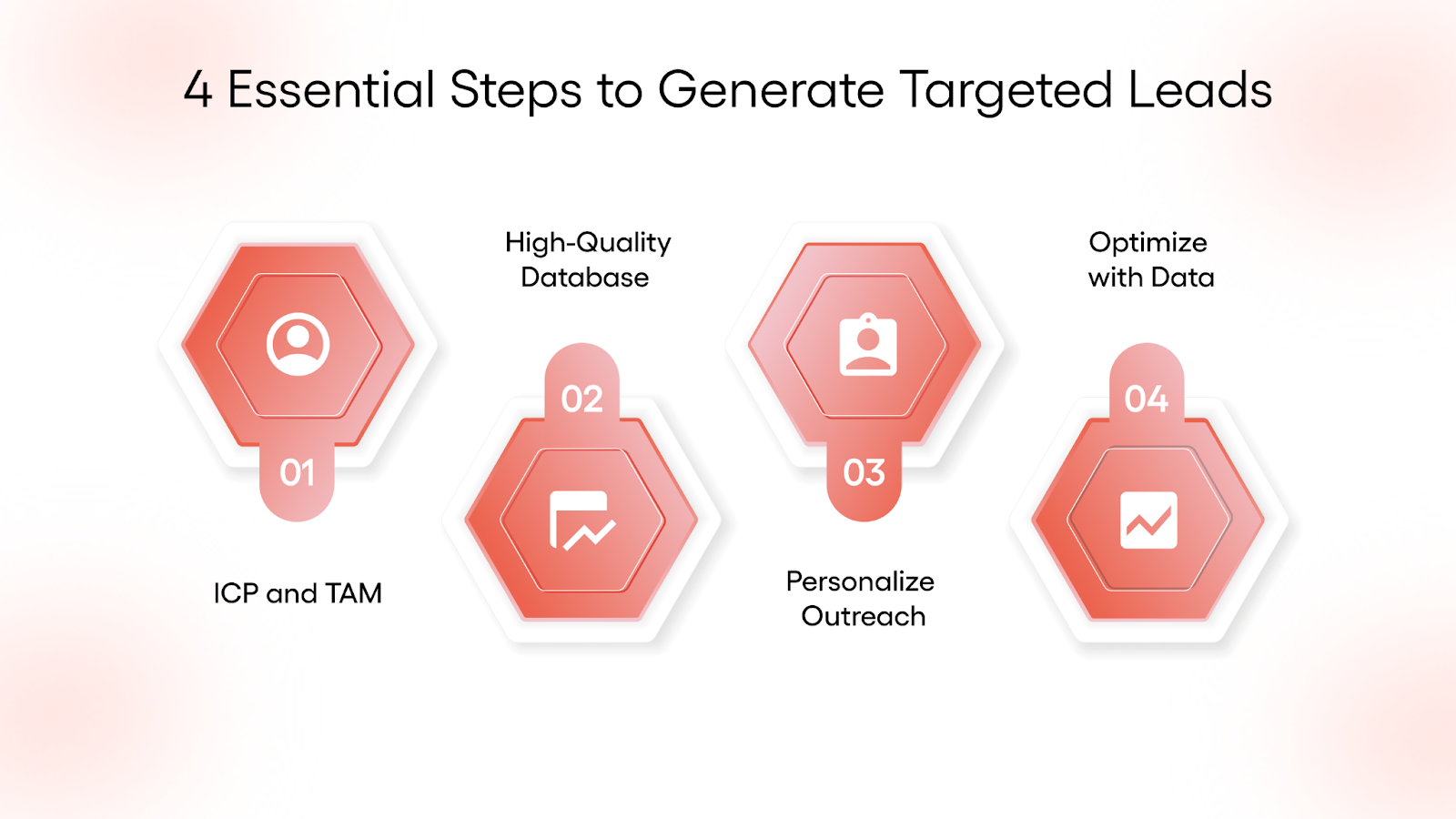
Implementing a targeted lead generation strategy is essential for businesses aiming to attract high-quality prospects.
Below are the key steps to effectively generate and convert targeted leads:
1: Define Your ICP and TAM
Clarify your Ideal Customer Profile (ICP) by mapping firmographics like company size, industry, and key pain points.
For example, if you're targeting MSPs in the U.S. with 50–200 employees, align your messaging to their typical challenges, like downtime or client churn.
Then calculate your Total Addressable Market (TAM) to understand the full revenue potential across that segment.
2: Create and Maintain a High-Quality Database
With a clear ICP, focus on curating a clean, up-to-date lead database. This ensures your outreach efforts reach real decision-makers, not cold contacts.
Here's how to build a high-performing B2B lead database:
- Source clean, verified data from reliable providers or first-party campaigns.
- Enrich lead profiles with firmographics, job roles, and engagement history.
- Segment lists by industry, buyer stage, and behavior for more personalized outreach.
- Regularly audit and update your data to remove bounced emails, inactive accounts, and role changes.
A quality database ensures that every outreach effort reaches the right decision-maker at the right time.
3: Plan and Personalize Outreach
Avoid generic email blasts. Instead, tailor your content based on industry pain points, job titles, or past engagement.
This increases your chances of engagement and conversion. Generic outreach messages can quickly be ignored, so take the time to make each message meaningful.
4. Nurture, Score & Optimize with Data
Once you've engaged a lead, move them toward SQL status by:
- Scoring engagement: Prioritize based on open rates, responses, and asset downloads.
- Triggering behavior-based follow-ups: Re-engage when leads revisit key pages or download gated content.
- Analyzing results weekly: Tweak subject lines, send times, and CTAs using live campaign data.
Companies that master nurturing, generate 50% more sales-ready leads at 33% lower cost.
Also Read: Top 8 Outbound Lead Generation Strategies for 2025
5 Proven Strategies to Attract High-Value Leads
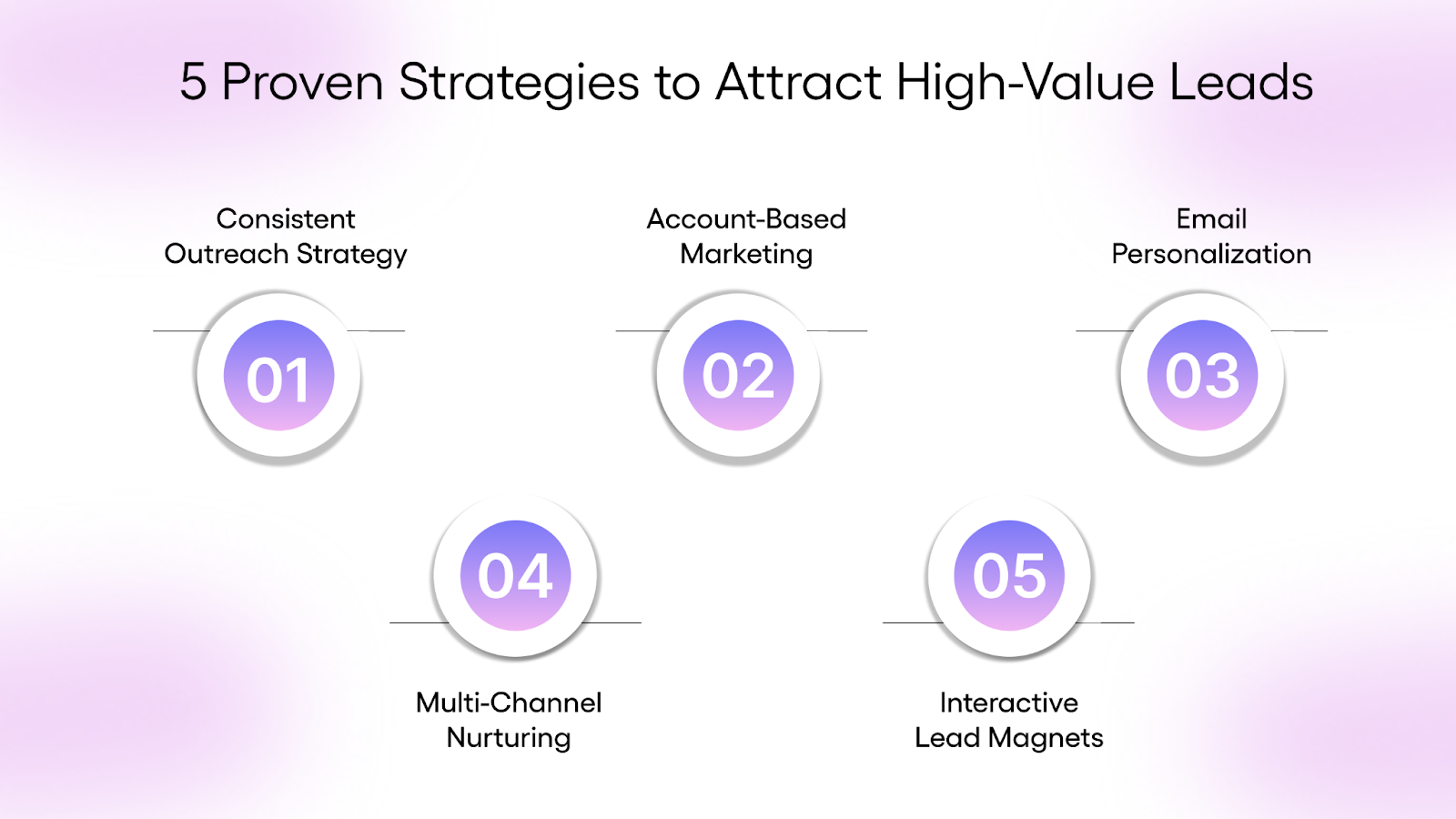
1. Establish a Consistent Outreach Strategy
Consistency builds trust. A well-structured outreach strategy includes a series of email touches, reminder nudges, and follow-ups spread over time.
Example: A Southern California staffing firm booked 76 appointments in just one month and achieved a 30× revenue spike, powered by TLM's tailored cadences and targeted outreach.
2. Account-Based Marketing (ABM)
ABM prioritizes quality over quantity by focusing outreach on high-value target accounts. Instead of mass-blasting emails, you identify and engage specific companies, like MSPs, staffing firms, or mid-market tech vendors, with personalized sequences tailored to decision-makers.
This method is known to drive 50% higher engagement and 69% better close rates.
3. Behavior-Informed Email Personalization
Behavior-informed personalization enhances scale without sacrificing relevance. Using triggers like email opens, content clicks, or previous engagement, teams can build sequences that feel timely and tailored without relying on automation.
This approach helps move leads through the pipeline with messages that align with their real interests and readiness to engage.
4. Multi-Channel Nurturing (Email-First)
Email remains a cornerstone in B2B, used by over 81% of retailers. But combining it with secondary channels, like SMS, retargeting ads, or even direct mail, can boost overall conversions, especially in longer sales cycles.
The key is to anchor your nurture funnel in email, then layer additional channels strategically based on the buyer's journey.
5. Interactive Lead Magnets
Tools like calculators, quizzes, or industry assessments can convert leads at a rate of 40%.
Integrate interactive assets into email flows, encouraging engagement and enabling deeper qualification based on responses.
Also Read: What Your Sales Team Should Do with Marketing Qualified Leads
TLM's Strategic Solutions for Generating Targeted Leads
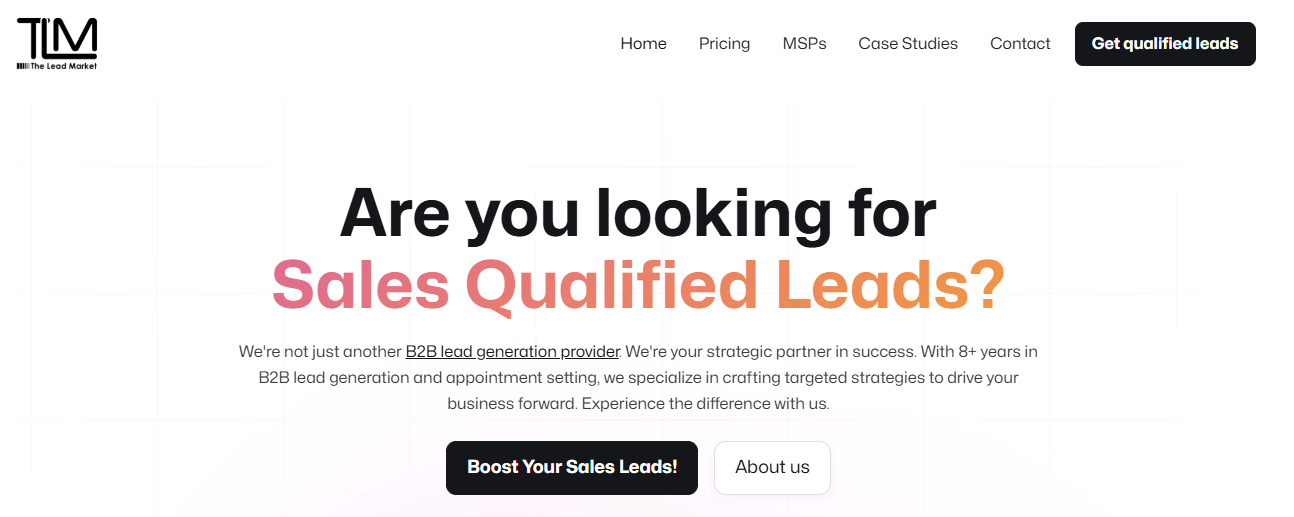
At TLM (The Lead Market), we help B2B companies achieve real growth through email-powered, precision-targeted lead generation. We don't rely on cold calling or LinkedIn messaging; instead, we use our proprietary tools to run scalable, compliant outreach that delivers sales-qualified leads, not just contacts.
Our services are built to reduce lead waste, shorten sales cycles, and maximize Monthly Recurring Revenue (MRR) across the U.S., Canada, and Australia.
What You Get with TLM:
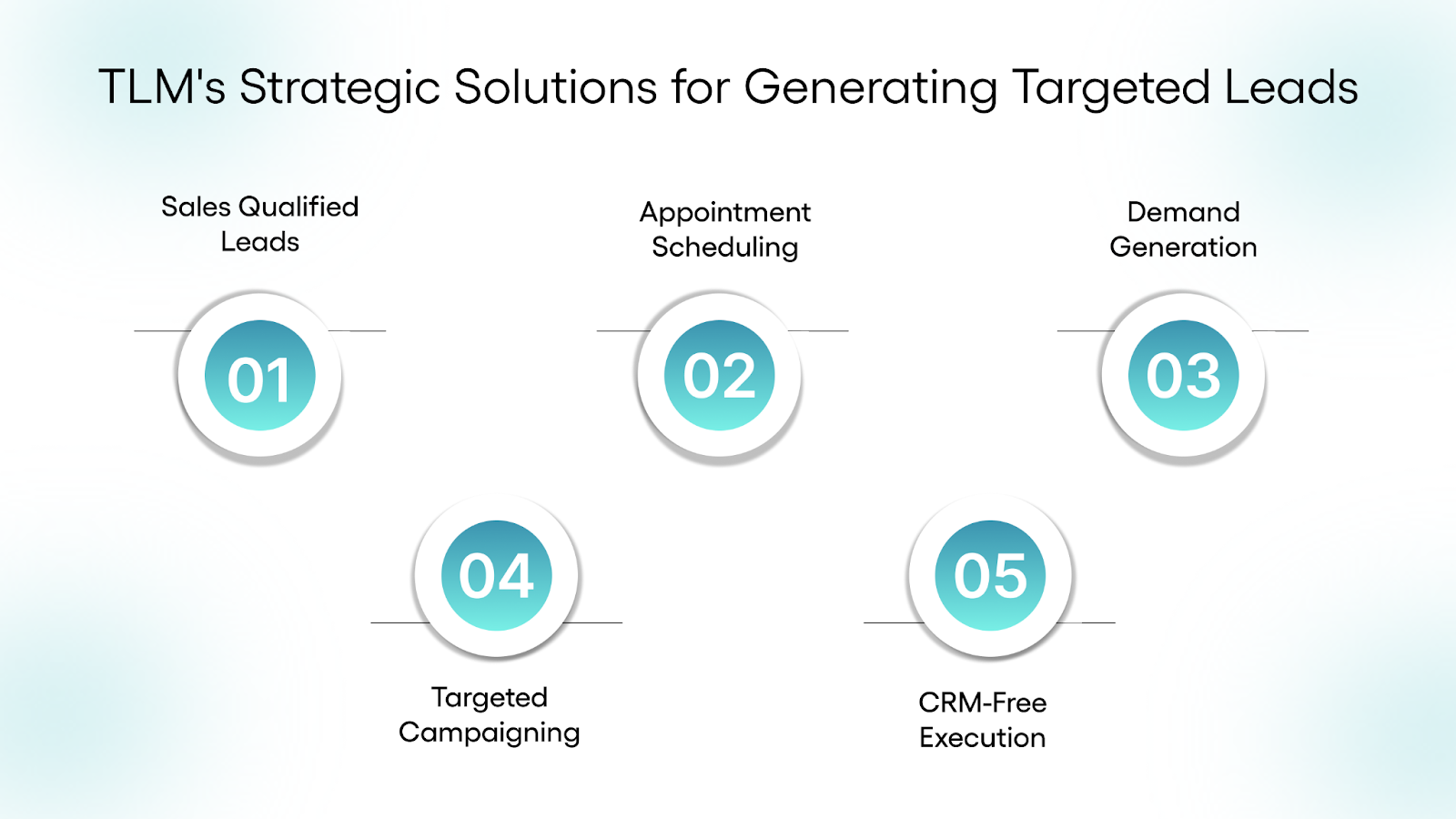
- Sales Qualified Leads (SQLs): Email campaigns that deliver only high-conversion leads, aligned to your ICP.
- Appointment Scheduling: Skip the back-and-forth. We book meetings with leads who've already shown interest.
- Demand Generation: Build long-term visibility and nurture leads over time using strategic email flows.
- Targeted Campaigning & ABM: Reach your most valuable accounts with tailored messaging for higher deal success.
- CRM-Free Execution: Use our proprietary email dashboard + smart scripts, no CRM required.
Want to see the TLM difference in action? Check out our success stories
Case Study: $20K MRR Deal Won by Pennsylvania-Based MSP with TLM
A managed services provider based in Pennsylvania partnered with TLM to drive high-quality B2B lead generation. Within a few months:
- The MSP closed a $20,000/month recurring contract with a clinical trials research firm in the life sciences sector
TLM executed an outreach campaign aligned to the MSP’s Ideal Customer Profile, targeting decision-makers in healthcare-related IT.
This led to measurable pipeline growth and a significant long-term recurring revenue win for the MSP.
Want to build a similar growth story for your business?
Let's Talk
Conclusion
Targeted lead generation in 2025 is a key element of any successful sales strategy. The key is to continuously refine your strategy, using data, personalization, and technology to drive success.
With a commitment to persistence and personalized outreach, TLM has contributed to generating more than $12 million in revenue through Monthly Recurring Revenue (MRR), Annual Recurring Revenue (ARR), and project-based engagements.
FAQs
1. How can you measure the effectiveness of your lead generation in 2025?
Track conversion rates, lead-to-customer ratios, engagement, and cost per lead to evaluate your strategy's success.
2. How do you personalize lead generation without automation?
Structured outreach sequences using ICP-aligned messaging, email engagement tracking, and manual follow-ups help deliver relevant communication without relying on automation. This approach ensures you maintain control while staying personal at scale.
3. What role does data privacy play in your lead generation strategy?
All outreach should follow ethical, permission-based communication standards. At TLM, we ensure CAN-SPAM compliance, allowing businesses to reach decision-makers without compromising trust or privacy.
4. How is lead generation different from demand generation?
Lead generation captures contact info for direct outreach. Demand generation builds awareness and interest over time. Lead gen drives immediate pipeline; demand gen warms up future buyers. Both work best together.


